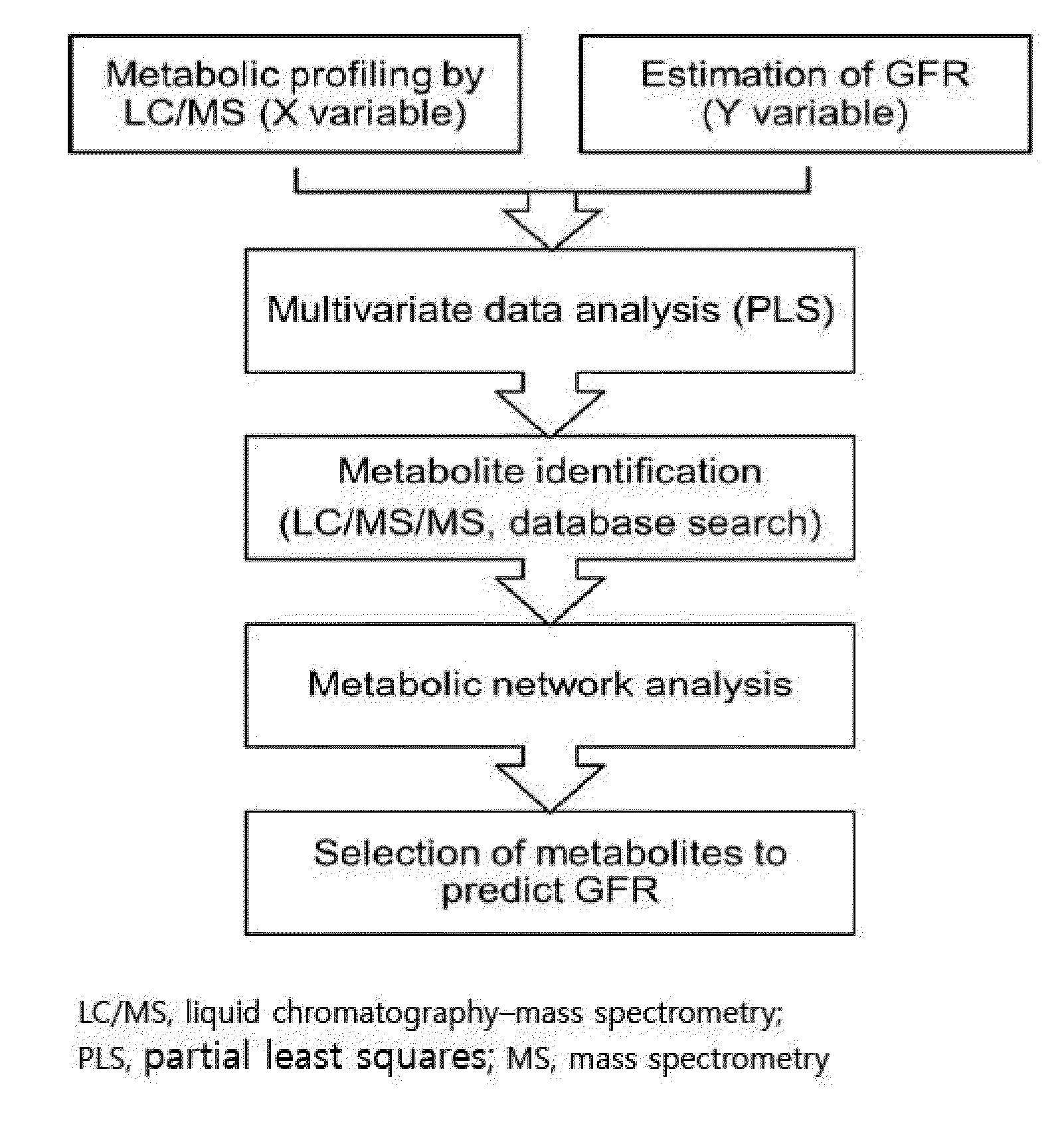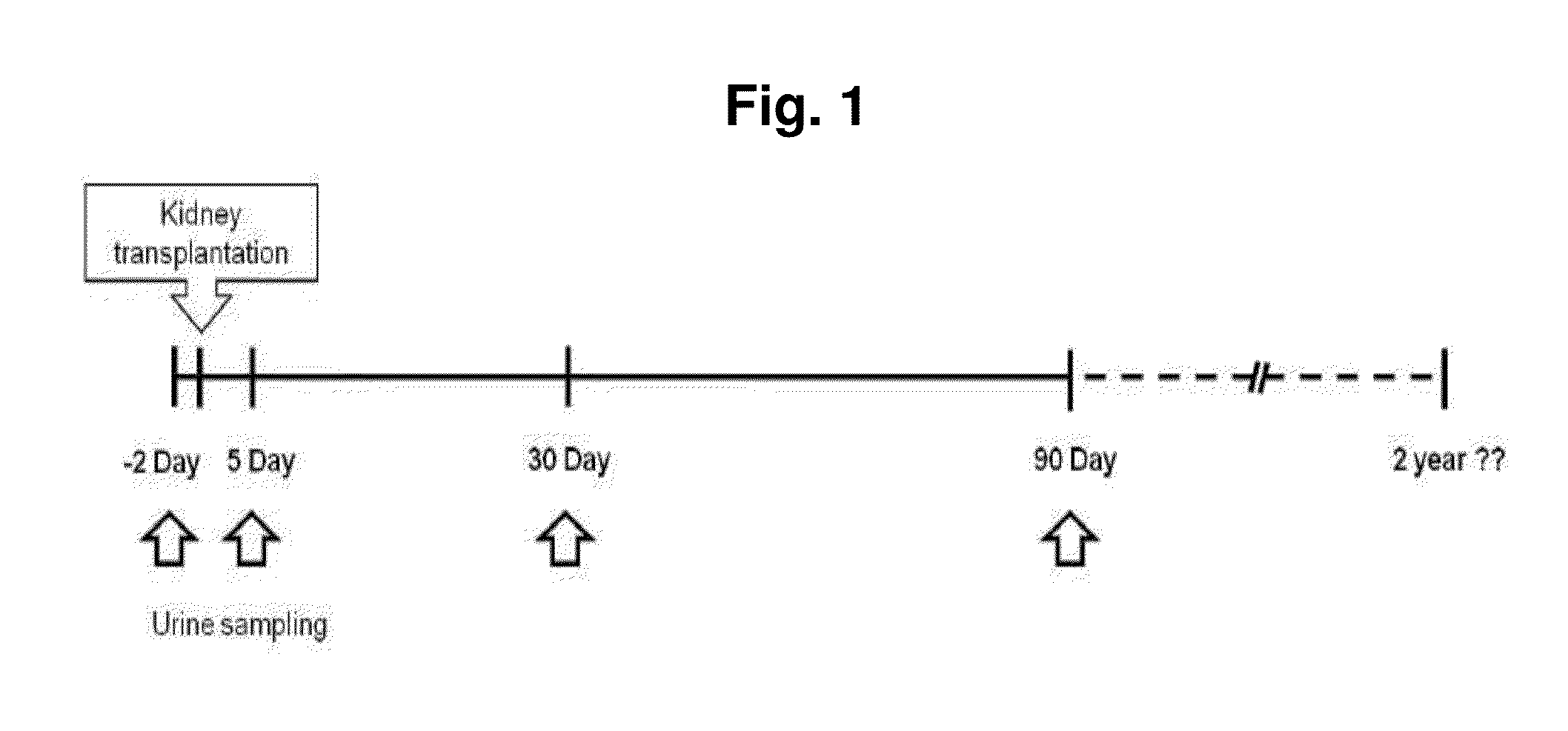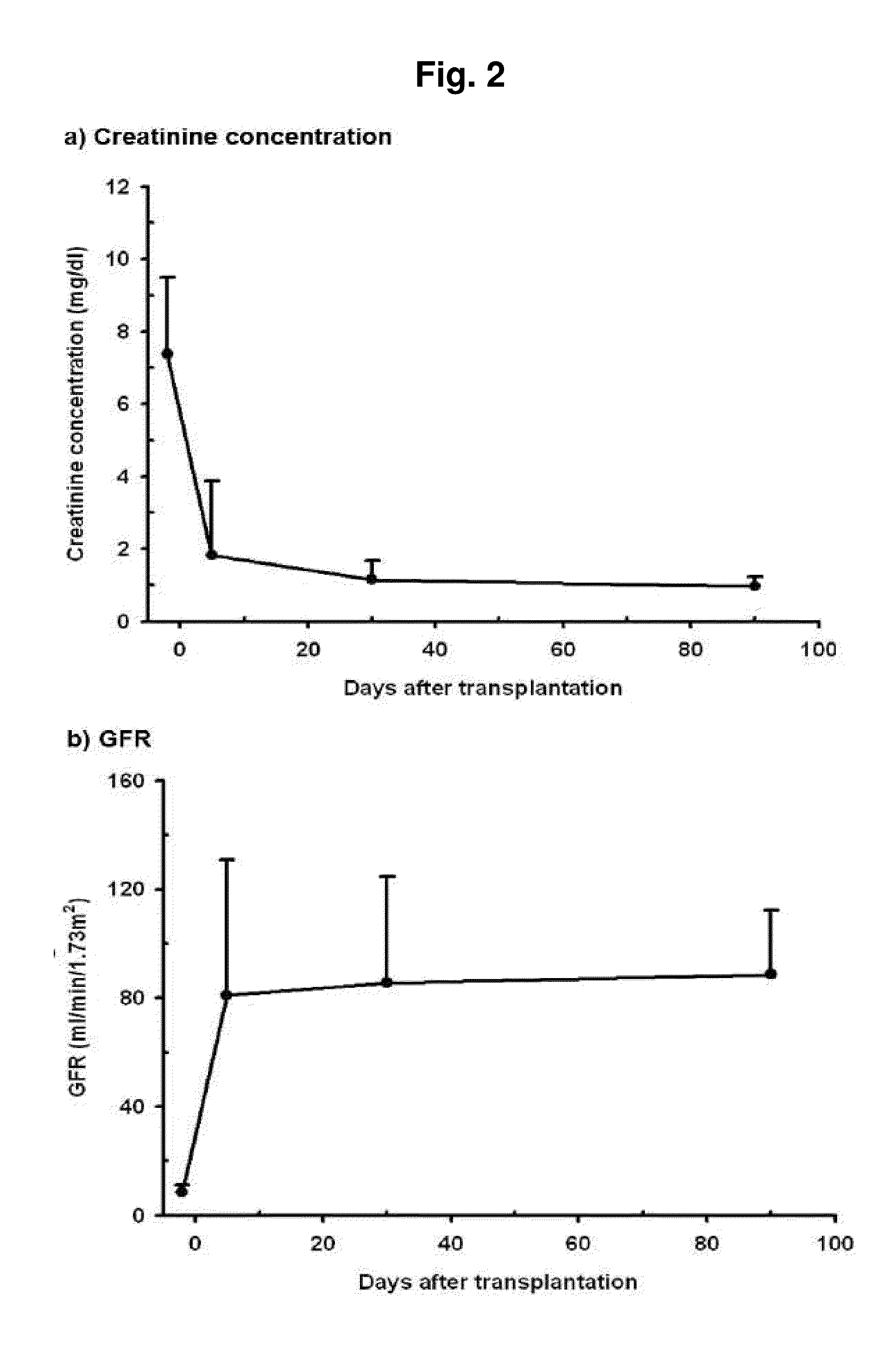Prediction method of glomerular filtration rate from urine samples after kidney transplantation
a glomerular filtration rate and urine sample technology, applied in the field of prediction of glomerular filtration rate (gfr) from urine samples after kidney transplantation, can solve the problems of limited set of established clinical diagnostic markers that lack sufficient specificity and sensitivity and detect, measures only one aspect of kidney function, and does not have high specificity and sensitivity
- Summary
- Abstract
- Description
- Claims
- Application Information
AI Technical Summary
Benefits of technology
Problems solved by technology
Method used
Image
Examples
example 1
[0075]Twelve patients with a mean age of 42±10.4 years were enrolled and followed up until 90 days after transplantation. A total of 66.7% of them had chronic glomerulonephritis. No acute rejections occurred up to 90 days. The estimated GFR by creatinine level showed a sharp increase from 8.6±2.57 to 80.9±49.86 and stabilized at 88.7±23.82 ml / min / 1.73 m2 on 90 days after transplantation (FIG. 2). Because GFR describes kidney function best (31), it was selected as a response variable (Y) in the PLS analysis. There was also a significant increase in urine volume (average 1354.8±578.2 ml) on 5 days, and then a stable mean urine output of 870.0±445.98 ml was observed on 90 days after transplantation (data not shown).
example 2
Urinary Metabolic Profiling Pre- and Post-Kidney Transplantation
[0076]We obtained global metabolic profiles of urine samples that were collected pre and post-transplantation from 12 kidney recipients (FIG. 1). Each peak-intensity represents the individual urinary metabolomes. And chromatograms of urinary metabolic profiling showed significant differences in peaks depending on the treatment time even after exclusion of background and exogenous (drug) peaks (data not shown). After exclusion of peaks corresponding to drugs and drug metabolites, 999 common metabolite ions (metabolite features) from endogenous metabolites with their respective intensities (peak areas) were obtained as a metabolic dataset. These intensities were used as a predictor variable (X) during subsequent multivariate data analysis. The principle component analysis (PCA) plot of quality-control values indicated that the stability and reproducibility of the LC / MS profiling analysis was confirmed that obtained metabo...
example 3
Selection of Metabolites Highly Correlated with GFR
[0077]We applied the PLS model to select potential metabolites that had the highest correlation with GFR. First, we selected two statistically significant LVs (LV1 and LV2) from PLS analysis as indicated by the high goodness of fit (R2=0.82) and high eigenvalues (15.8 and 3.83 for LVs, respectively). The plot of PLS scores from two LVs shows three groups (circled) among patient samples (FIG. 5a). The trajectory of plots indicated by the arrow reflects the significant changes in metabolic profiles, which correlated well with GFR over time. The metabolic changes between pre- and post-transplantation were obvious, but the metabolic pattern overlapped among samples that were collected on 30 and 90 days. This pattern showed that its differentiation was decreased due to the stable kidney function after kidney transplantation. This PLS model had a high predictability (Q2=0.702) and explained overall 81.9% of the total variation. LV2 explai...
PUM
| Property | Measurement | Unit |
|---|---|---|
| capillary temperature | aaaaa | aaaaa |
| particle size | aaaaa | aaaaa |
| particle size | aaaaa | aaaaa |
Abstract
Description
Claims
Application Information
 Login to View More
Login to View More - R&D
- Intellectual Property
- Life Sciences
- Materials
- Tech Scout
- Unparalleled Data Quality
- Higher Quality Content
- 60% Fewer Hallucinations
Browse by: Latest US Patents, China's latest patents, Technical Efficacy Thesaurus, Application Domain, Technology Topic, Popular Technical Reports.
© 2025 PatSnap. All rights reserved.Legal|Privacy policy|Modern Slavery Act Transparency Statement|Sitemap|About US| Contact US: help@patsnap.com



